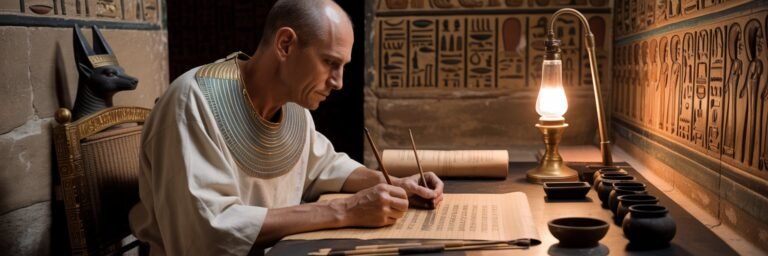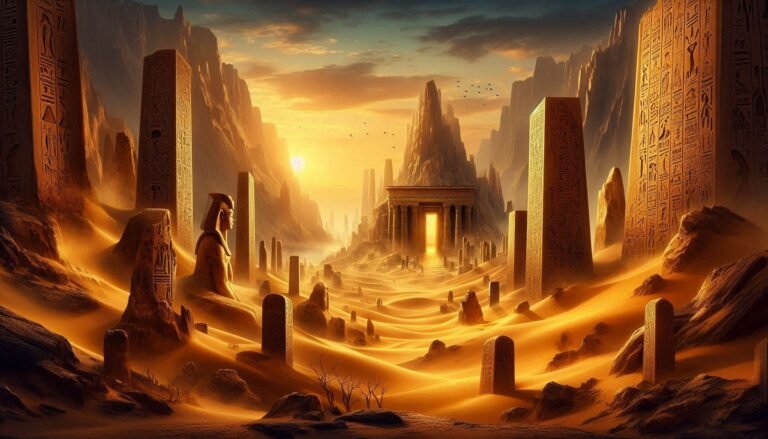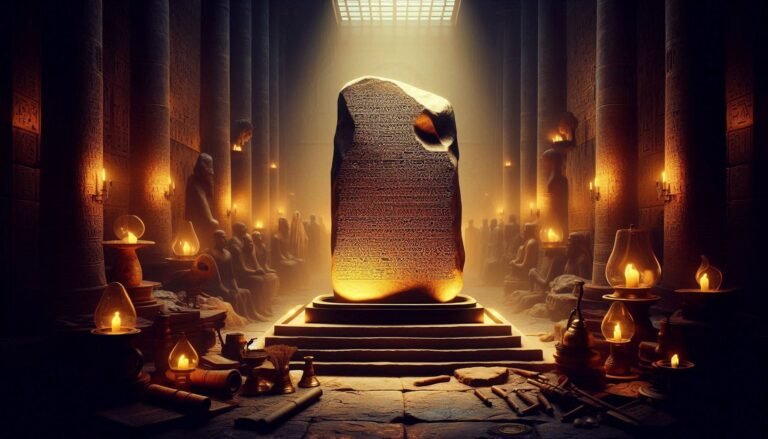INTRODUCTION
The sands of time have buried more than just mummies and pyramids. They cover a rich, interwoven tapestry of events that determined the course of one of the world’s most profound civilizations. The ancient Egyptians were not just skilled builders or religious devotees; they were pioneers in governance, law, art, and science. Their culture, innovative prowess, and influence on the ancient world have stood the test of time. Yet, as much as we know about Ancient Egypt, there remains an immense array of uncertainties and conjectures that continue to enthrall scholars of history, culture, and archaeology. This article aims to journey back in time to explore the Top 10 Turning Points in Ancient Egypt, unlocking insights into the milestones that shaped this remarkable civilization.
HISTORICAL BACKGROUND
The legacy of Ancient Egypt is nearly as eternal as the desert that has preserved its remnants. Spanning over three millennia, from approximately 3150 B.C. to 30 B.C., this epic civilization laid the groundwork for many facets of modern society. Their radical innovations in agriculture, medicine, architecture, and government have left a lasting impact on humanity. Egypt’s historical timeline, as accepted by most scholars, is segmented into various eras—Predynastic, Early Dynastic, Old Kingdom, First Intermediate Period, Middle Kingdom, Second Intermediate Period, New Kingdom, Late Period, and finally the Ptolemaic Period. Within these epochs, events of seismic changes and shifts occurred, marking robust turning points of progress and setbacks, triumphs and defeats. To distill 3,000 years of history into ten turning points poses a daunting task. Still, each episode chosen represents a threshold where Ancient Egypt’s trajectory forever altered.
THEORIES AND INTERPRETATIONS
Elucidating the top 10 turning points in Ancient Egyptian history invokes an array of theories and interpretations, many of which continue to evolve as more information comes to light. The unification of Egypt under Pharaoh Menes around 3100 B.C., beginning the Early Dynastic Period, is undoubtedly a pivotal point. Another is the shift from the Old Kingdom to the First Intermediate Period around 2181 B.C. This transition marked a break from absolute monarchy, evolving more complex regional governance, and altering societal structures, an interpretation posited by historians like Nicolas Grimal.
Several less mainstream theories offer alternative perspectives. Renowned Egyptologist David Rohl, for example, contends for a revised Egyptian chronology, suggesting that previous synchronisms with Biblical and Near-Eastern history necessitate an adjustment of Egypt’s timeline. These alternate theories, contentious and intriguing, add layers of complexity to our understanding of history.
MYSTERIES AND CONTROVERSIES
Egypt’s antiquity is mired in mysteries and controversies. Among these is the construction of the Great Pyramid of Giza during the reign of Khufu in the Old Kingdom, approximately 2580–2560 B.C. Despite being a testament to ancient architectonic brilliance, we still grapple with understanding how such a precise structure was constructed without modern machinery. There is also the contentious topic of the Sea Peoples’ invasion during the reign of Ramses III, around 1180 B.C, which lead to the collapse of neighboring civilizations yet was effectively repelled in Egypt. Who these Sea Peoples were and where they originated from remains a mystery, shrouded in speculation and controversy.
SYMBOLISM AND CULTURAL SIGNIFICANCE
Various turning points held profound symbolism and cultural significance. The rise of the cult of Amun during the Middle Kingdom (2055-1650 B.C.) marked a spiritual transformation, eventually leading to Amun’s merger with the sun-god Ra. Similarly, Akhenaten’s controversial monotheism, emphasizing the worship of Aten over all other gods during the late 18th Dynasty (1353-1336 B.C.) reflected drastic religious and cultural shifts. The conquering of Egypt by Alexander the Great in 332 B.C. brought Hellenistic culture into Egypt and marked the start of the Ptolemaic dynasty, a blend of Greek and Egyptian traditions.
MODERN INVESTIGATIONS
Modern investigations continue to reveal insights into Ancient Egypt’s turning points. Cutting-edge technologies, such as satellite imaging and ground-penetrating radar, are being used to uncover secrets hidden beneath the desert floor. Recent studies have revisited the collapse of the Old Kingdom, focusing on climate change and societal factors. Moreover, new excavations near Luxor have unearthed a ‘lost golden city’, dating back to the reign of Amenhotep III, providing invaluable clues to urban life during the New Kingdom.
LEGACY AND CONCLUSION
The legacy of Ancient Egypt is a saga of human resilience, ingenuity, and transcendental thinking, inscribed in the indestructible stones of time. The epochs of Egypt were laced with victories and defeats, innovations, and mysteries that marked significant turning points. They were testimony to the resounding potential of humanity and the endurance of culture and civilization, from Pharaoh Menes’ unification of the land to the final echoes of the Ptolemaic Era and the tumultuous reign of Cleopatra VII. With each turn of the page, each sifted sand grain, their story continues to captivate, inviting us to learn, to question, and to marvel at the wonders birthed by this cradle of civilization. After all, as the Greek historian Herodotus once noted, “Egypt is the gift of the Nile,” indeed, but more so, it is a timeless gift to human history.
Ancient Egypt’s turning points are reminders that our present and future rest on the shoulders of the past. As we continue to delve into Egypt’s profound history, divining truths from the fragmented frescoes and deciphered hieroglyphs, we link the thread of human evolution in our relentless pursuit of understanding. Where will this journey lead us next? Only time can unveil the torrent of yet undiscovered turning points ensconced in the eternal sands of Egypt.






